
The Siren Paintings
“You will come to the Siren (paintings) first of all; they bewitch any mortal who approaches them.” —Homer, The Odyssey
Click on an image to view.


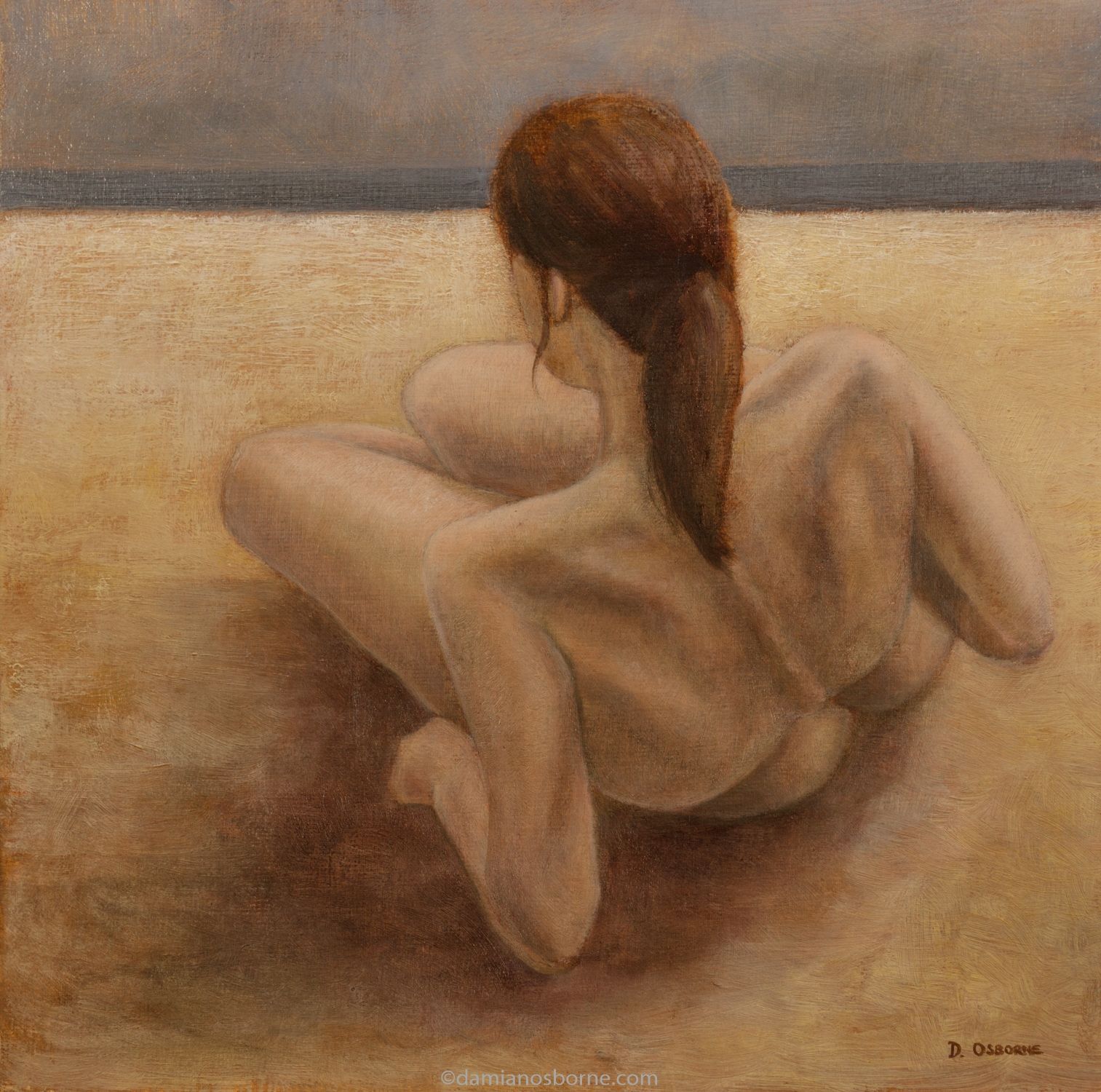

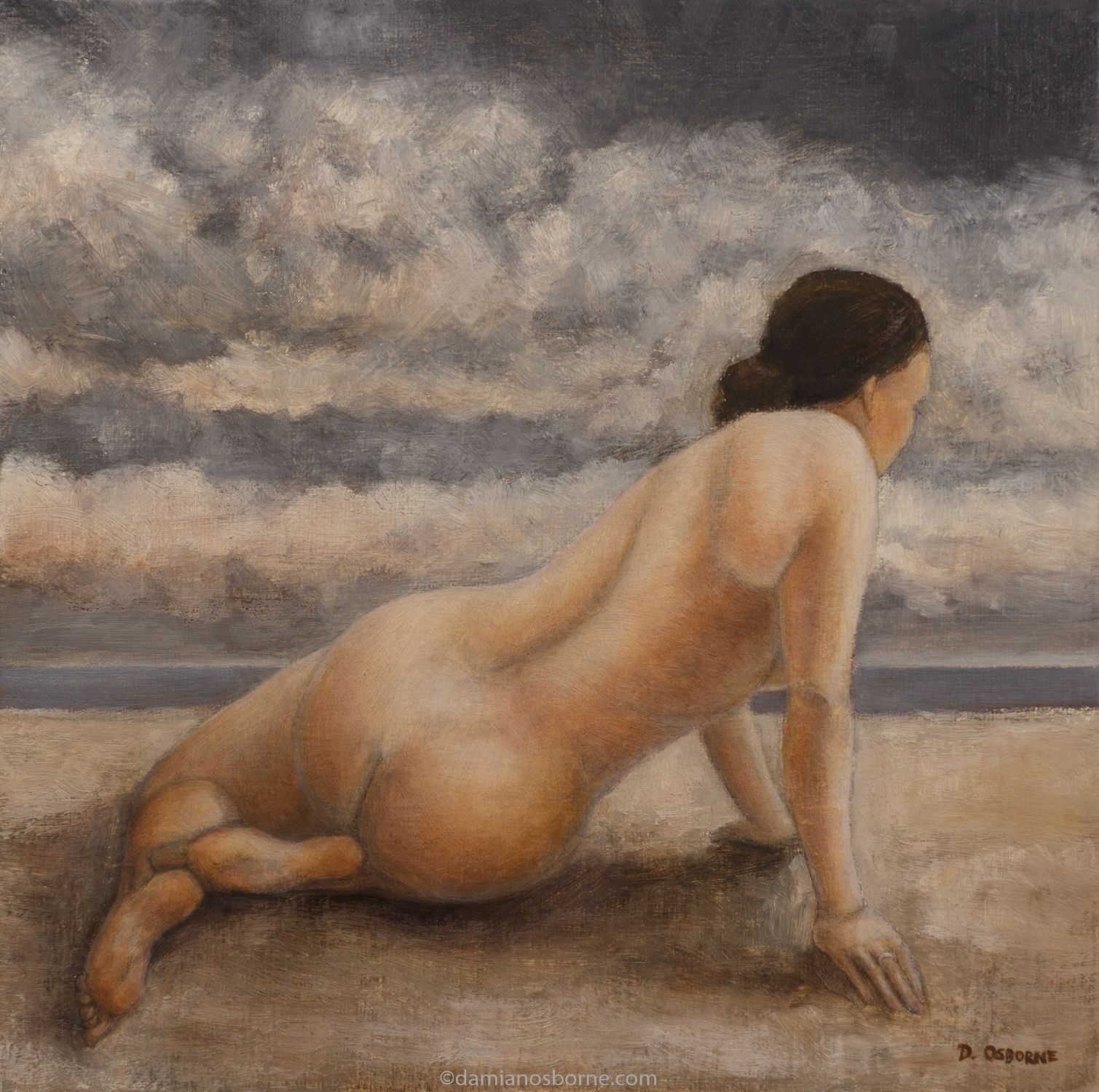
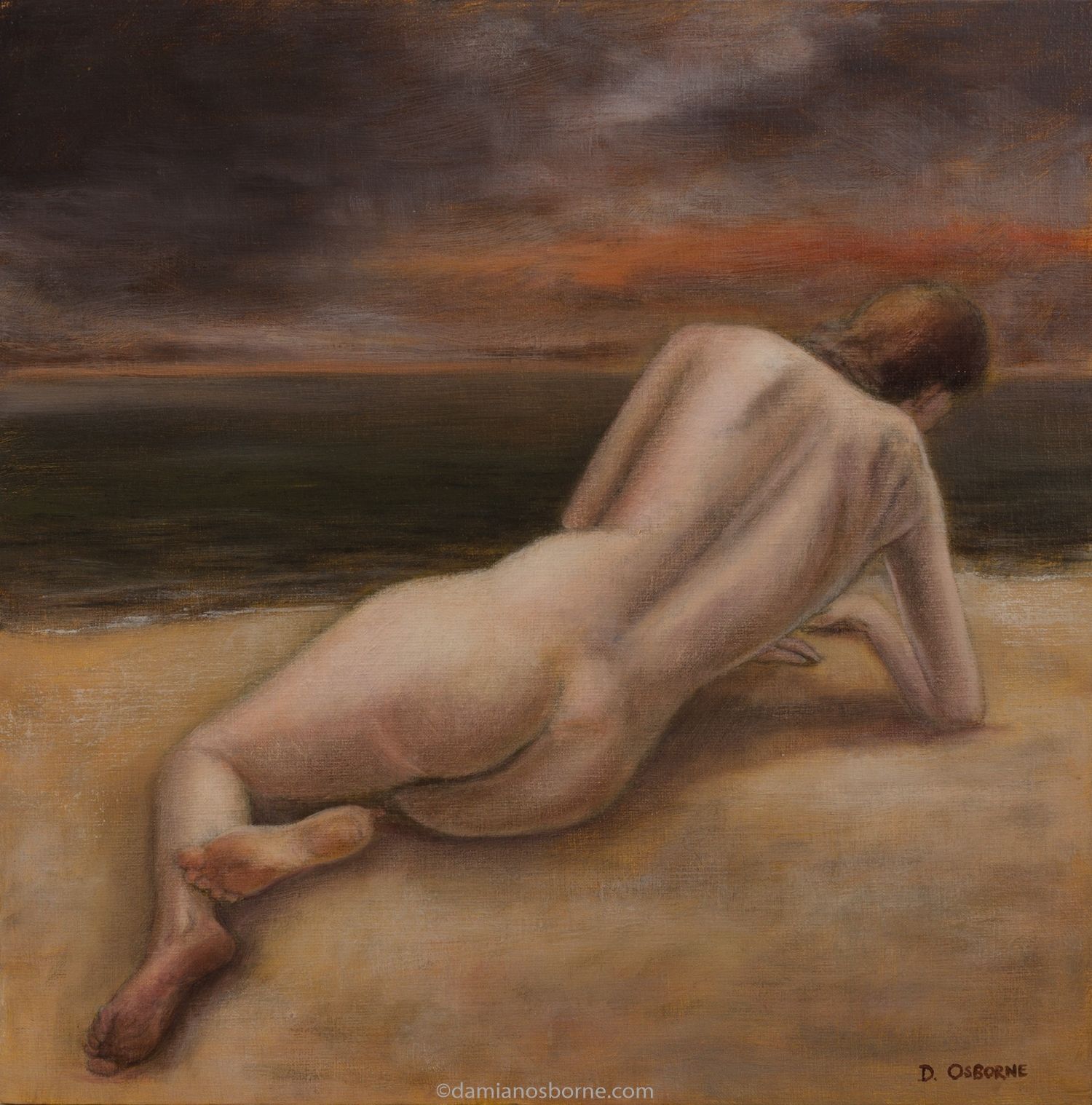
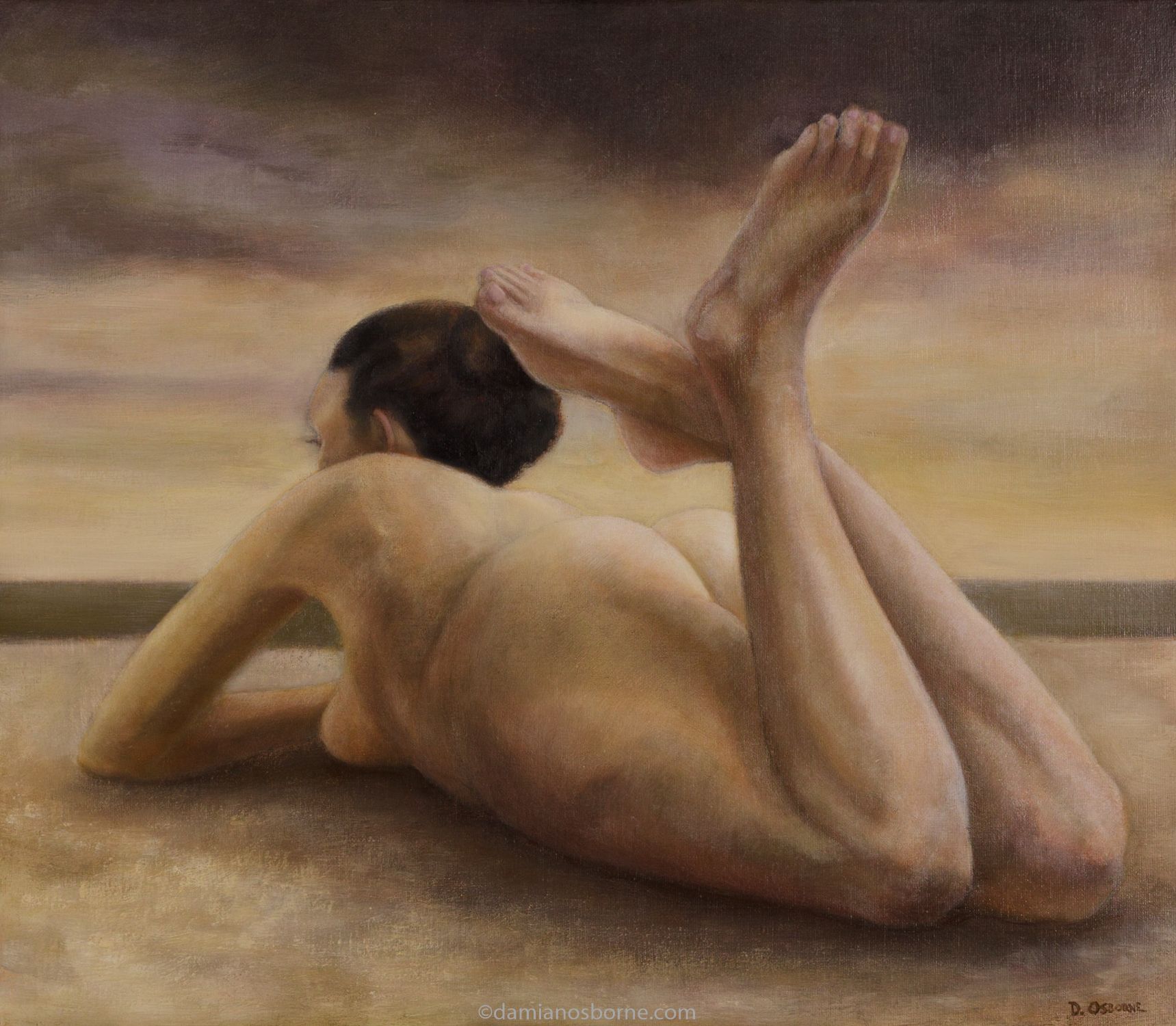








To view all figure painting archives, go to Figure Paintings.
Sirens
You see, they sang to me in my own voice,
how was I to know?
They wove the gauze of waking sleep
around my heart,
I learnt to love the flightless
yearning in their voices, carried on the wind
from the island where they starve,
for company, their wingfeathers lost
to the Muses in a singing contest,
plucked and planted in the victors’ crowns,
never to regrow on shame-scalded flesh—
who would forget such a scene?—
and afterwards, to be stranded, wingless,
seduction their only remaining power—
what woman wouldn’t understand?—
they knew just what I longed for,
they crafted a melody just for me,
infused with iridescent memories
of ecstatic powers safely
beyond reach,
they crooned the ancient lullaby
that makes forgetting
seem like fun, losing
sound like love.
By Frances C. Hatfield
The Siren Paintings
I painted this series of nude and melancholic women lying or sitting on a lonely shore, the water and the sky reflecting the uncontrollable elements of the unconscious.
These Sirens are faceless women. The dynamic tension of their poses and the moods portrayed by the surroundings, tell the story. The paintings are deceptively simple.
Here, we don’t feel them to be flesh-eating harpies or femme-fatales, luring sailors to destruction through their irresistible singing. Rather, I sought to depict a silent, reflective and emotional quality to the paintings.
A feeling of being lost to, but also part of the natural elements.
These are mythical women trapped on the Islands of Longing. These Sirens are flightless. We have come up behind them. Their attention has been directed inward, but their allure has nevertheless taken us in with them.
The Sirens here don’t seem to be singing. In fact they seem to be oppressed, physically weighed down, even nearly defeated. But there’s a kinetic, potent strength in them still. We have the feeling that they will, in time, arise.
The unconscious may be suppressed, but it arises always and is made manifest. Perhaps then, we’ll remember its face.
Painting the Nude Female as a Non-Sexualised Embodiment of the Divine
“The nude is the most holy thing. If you can get next to it, it is a divine spirit. It’s soul. He paints the soul.” —Helga Testorf, commenting on Andrew Wyeth’s controversial series of nude paintings of her.
“What spirit is so empty and blind, that it cannot recognize the fact that the foot is more noble than the shoe, and skin more beautiful that the garment with which it is clothed?” —Michelangelo

In our poetically and soulfully barren contemporary culture, there is a lot of shaming and controversy around nudity in art.
Unfortunately, such reactions say a lot about how corrupted and spiritually bankrupt our society really is; how out of touch with the marvel of our own form.
The human body is an ‘embodiment‘ of the soul and spirit. To shun such an inexplicable and miraculous vehicle is to deny all that is sacred and wonderful in Nature and the Creation. According to the Bible, Adam and Eve strolled around the garden starkers.
Even children see the naked body as completely natural. It is our prudish and backward society that is so unnaturally obsessed with sex and the nude figure.
There are a lot of articles published about the issues surrounding nudity in art, which at this time, I have no interest in. Let me rather say why I find the nude so fascinating to paint.
The nude is not contained by a time-frame or a culture. Therefore the artwork remains timeless and is not subjected to any fashions. The painting belongs to an unknowable world, like in a dream.
The gesture of the body, particularly in art, speaks a language we understand intuitively. It speaks to our own unconscious, our own bodies. That is how I wanted to represent the embodiment of the divine unconscious.
The nude is sacred and universal. It is symbolic and powerful. The nude is transcendent. It represents the convergence of the animal, material plane, and the plane of consciousness — matter and spirit.
The nude is inherently ideal.
I don’t mean to say that I tried to paint the idealised female form according to classical or our contemporary ideas and tastes. In fact, I purposefully wanted to show beauty in bodies we would not consider ‘ideal’; fat bellies, bony spines, big asses.
There is so much negative body consciousness these days, but I wanted to show artistic appreciation for the beauty of the ordinary female body in its various forms. As a man and as an artist, I wanted to pay homage to the mythical beauty of the female body.
I wanted to portray the body also as a representation of our human vulnerability. We feel the cold wind burn our skin, the hot sun scalds us — like the Sirens whose protective feathers were plucked from them.
We fear the destructive power of the ocean, against which, we are nothing. Physically and psychologically, we’re connected to our natural environments, and sometimes those places can be harsh.

The Painting Technique
The Siren Paintings began as a series of charcoal or graphite life drawings which I drew from live models. The poses were generally 15 to 30 minutes, with the shortest pose being merely 5 minutes.
I then prepared oil-primed panels, upon which I transposed the drawings and painted the figure and the landscape completely from imagination. This is where daily studying and practicing anatomy, and doing life drawings, pays off in my paintings.
I chose a limited palette of Flake White, Payne’s Grey, Red Oxide, Gold Ochre, Cadmium Red and Raw Sienna. Pretty much just bluish black, white, red and yellow.
With this limited selection of oil paints, I was able to create harmonious colour balances and control the temperatures of the light and shadows, and create beautiful secondary blues, greens, violets and greys.
I liked the thick impasto created by the large particle size of the Flake White (lead oxide white) pigment, as well as its transparency that created subtle colour glazes and scumbles in many thin, painstaking layers.
By knowing how the colours would react, as well as experimenting with different layers, I produced layers of colour that cannot be created by just slapping on paint directly from a tube.
I wasn’t interested in creating stiff, ‘perfect’, photographic-looking paintings that for some reason, people seem to pronounce ‘good art’ — perhaps because in our world, we’re so used to the photographic image; if you lived in the Middle Ages, you’d probably think Byzantine icons looked super realistic — but I digress.
Rather, I was more fascinated with the subtle shifts of colour around the form; playing with temperatures with a very limited number of pigments; the imperfections; the textures and tactility of the paint layers; the lost edges and lack of details, leaving more to the imagination; even being able to still see the charcoal or conté drawing beneath the paint in places.
These are the things about paintings that get me excited.

The Song of the Siren
I was drawn by the mythical image of the beautiful Sirens, ever since I read Homer’s Odyssey as a teenager.
And many young schoolboys may be familiar with the legendary adventures of Jason and the Argonauts, where Orpheus plays his lyre more sweetly than the Sirens’ luring voices, in order to save the ship from certain peril.
Many Old Master classical paintings depict romantic scenes of Odysseus tied to the mast of his ship.
Nubile and seductive women, frolic and writhe in the ship’s wake and bow, or reach out languidly from the rocky shore towards the fiercely-rowing sailors, whose ears are stopped with beeswax.
Sometimes the sirens are shown as half-fish women or mermaids. Sometimes they fly around the rocky island with the bodies of birds and the heads of beautiful women, singing their sweet enchanting songs of death.
According to another legend, and referenced in Frances C. Hatfield’s poem above, the Sirens were persuaded by Hera, Zeus’s wife, to compete in a singing contest against their rivals, the Muses.
The Muses won, and plucked the feathers from the Sirens (who were hybrid bird-women), making crowns from them. This caused the Sirens to turn white, fall into the sea, and become the islands near Crete, called Leukai (the White ones).
Why is the Song of the Siren so Deadly?
The voice of the Muse contrasts with that of the Siren. The song of the Siren is a destructive force where the rational is killed.
The Muses are the divine inspirers; the Sirens charm us into the underworld of the soul. Why this powerful lure towards death and oblivion?
The Siren is the symbol of the primal power of the female and of the unconscious. In our patriarchal culture and male dominating religions, women represent waywardness from the ships’ course.
In the Bible, and in the Genesis story particularly — with the temptation of Eve and the story of Adam’s first wife, Lilith — women are to be feared for their irrationality and their sexual entrapments, thus corrupting men.
“A woman should learn in quietness and full submission. I do not permit a woman to teach or to assume authority over a man; she must be quiet” (1 Timothy 2:11–12).
While early Christianity began to replace pagan beliefs, Sirens were still used as a symbol for the dangerous temptation embodied by women in Christian art of the medieval era.
Christianity would later use these pagan myths by interpreting them as symbolic foreshadowing of the Christ image. Odysseus tied to the mast, sailing away from the Sirens, could allude to Christ on the cross and his victory over all worldly seductions.
As rational beings we both fear and are intoxicated by the uncontrollable forces of nature, and the danger and powerful allure of the unconscious.
We fall victim to its sweet lullaby; where our ego drowns in a sea of emotions, dreams, and waves of uncontrollable urges, and the self is dashed on the rocky shores of oblivion.
But what of the gifts the Sirens sing to us?
As they told Odysseus,
We know of all the sorrows in the wide land; we know all things that come to pass on the fruitful earth.
The Gift of the Sirens’ Song
The mast of Odysseus’ ship represents the vertical, spiritual axis upon which he is bound. The horizon of the sea, the boat, represents the horizontal plane, where we exist in our quotidian, ordinary, rational world, striving to attain our life’s goals.
Being bound to the cross on Golgotha or to the mast of the ship symbolises the convergence of the spiritual and physical.
Being bound implies that the ego is subdued, writhing against the bounds in order to usurp control; the rational consciousness tries desperately to be in charge, and fears annihilation.
This is the path of spiritual awakening and the death of the ego. The ego is the illusion of our limited selves, the identity we create for ourselves based on our own definitions and past experiences.
Listening to the Sirens’ song, Odysseus writhes in agony, and the crew tighten his bounds. He is thus forced to surrender and to listen. This surrender is the point of convergence.
The Siren’s song can never be revealed because it is so personal.
they knew just what I longed for, they crafted a melody just for me,
The song of the siren is our own song, coming from our own watery depths of the unconscious — like faces in a dream.
As Odysseus listens to the songs of the unconscious, he begins to realise how limited was his being and restrictive his perspective.
In Jungian psychology, the myth indicates the individual’s struggle to forego our limited, conditioned behaviours and liberate our libido, life instinct, or creative life energy, as Carl Jung calls it.
But the warning in the myth tells us that unless we are bound to the mast of reality, and are mature in our spiritual discipline, the allure of the unconscious can be all too evocative, and thus overwhelm us.
The Anima
The Siren represents the anima (Latin for “soul”) in Jungian psychology. The anima is the soul of the feminine. She does not care for an orderly life. Neither does she care for the woes of mortal men. She wants intensity of experience.
The anima is an uncontrollable force, and is irrational. Yet within her is the source of great wisdom and sensuality. The anima represents intuitions or deep feelings and emotions.
Opposite, is the animus, the ‘male side’ representing rational thought, focus and reason.
According to Jung, it is the quest of every individual, both male and female, to harmonise and master these archetypes, the male and the female energies, in order to gain self realisation or self-hood.
For spiritual wholeness, it is necessary to connect both the unconscious and the conscious mind.
Art speaks to both our rationality and our unconsciousness. It is the marriage of heart and mind. Art transmits feelings, and it is the conduit between the soul and the intellect.
Sympathy for the Sirens
The Sirens are usually portrayed as fearsome monsters. But I wanted to show these Sirens as alone, perhaps lost, defenseless; exposed, but still hidden.
I wanted to hold up a mirror to our own vulnerability and our own mystery. We do not see their faces, but they are in essence, us.
To read more about the Siren Paintings, go to ‘The Sirens 2019 – 2020’.
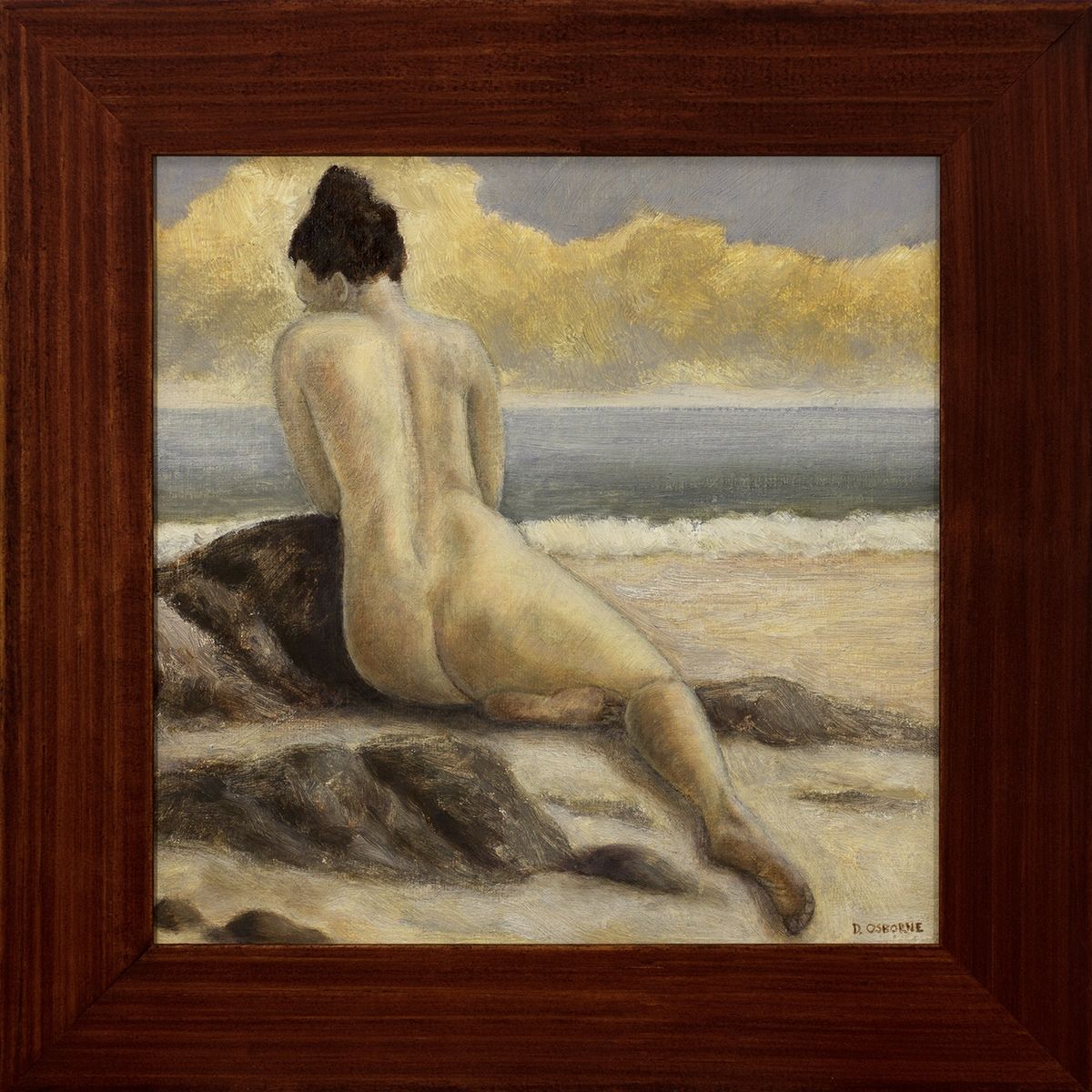

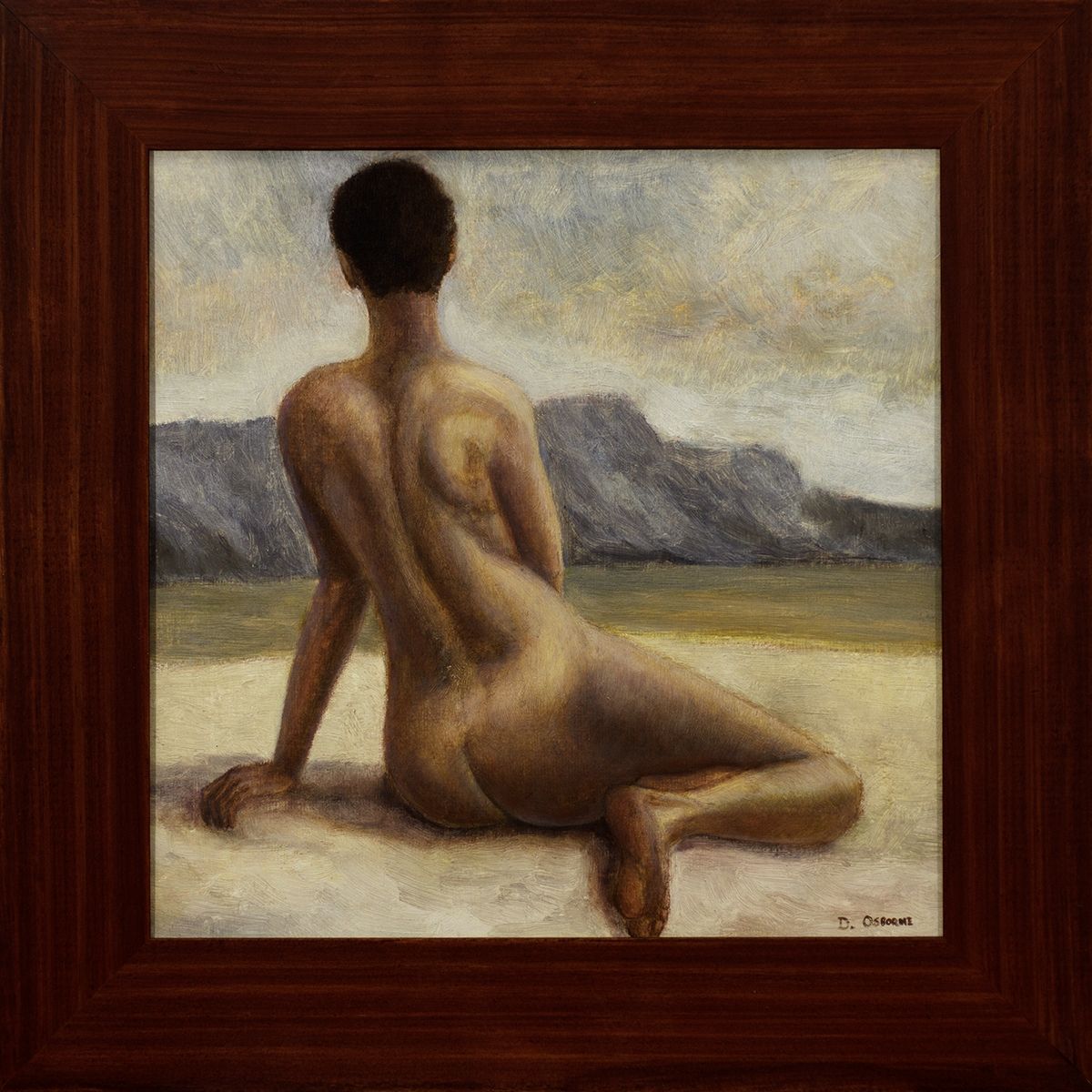

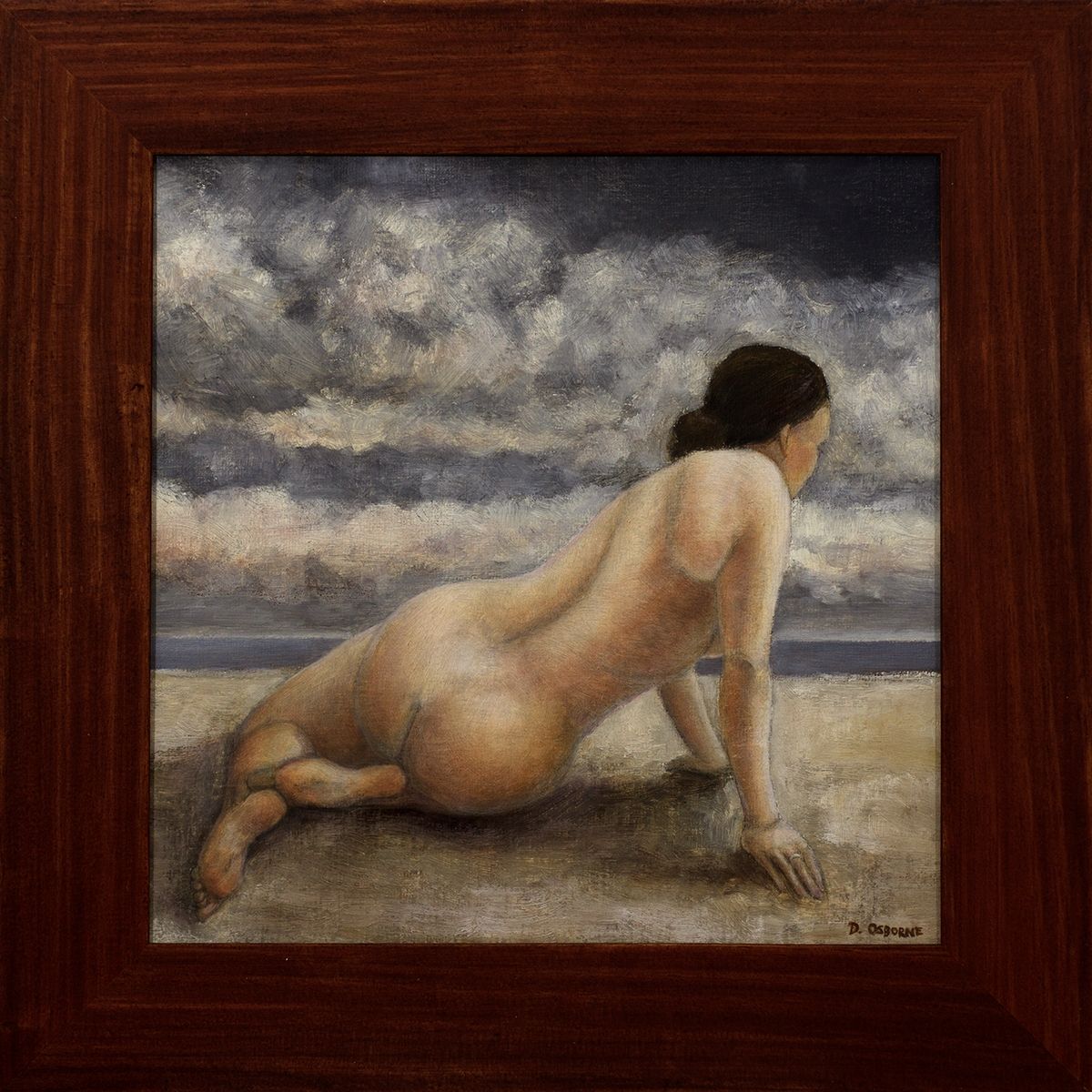

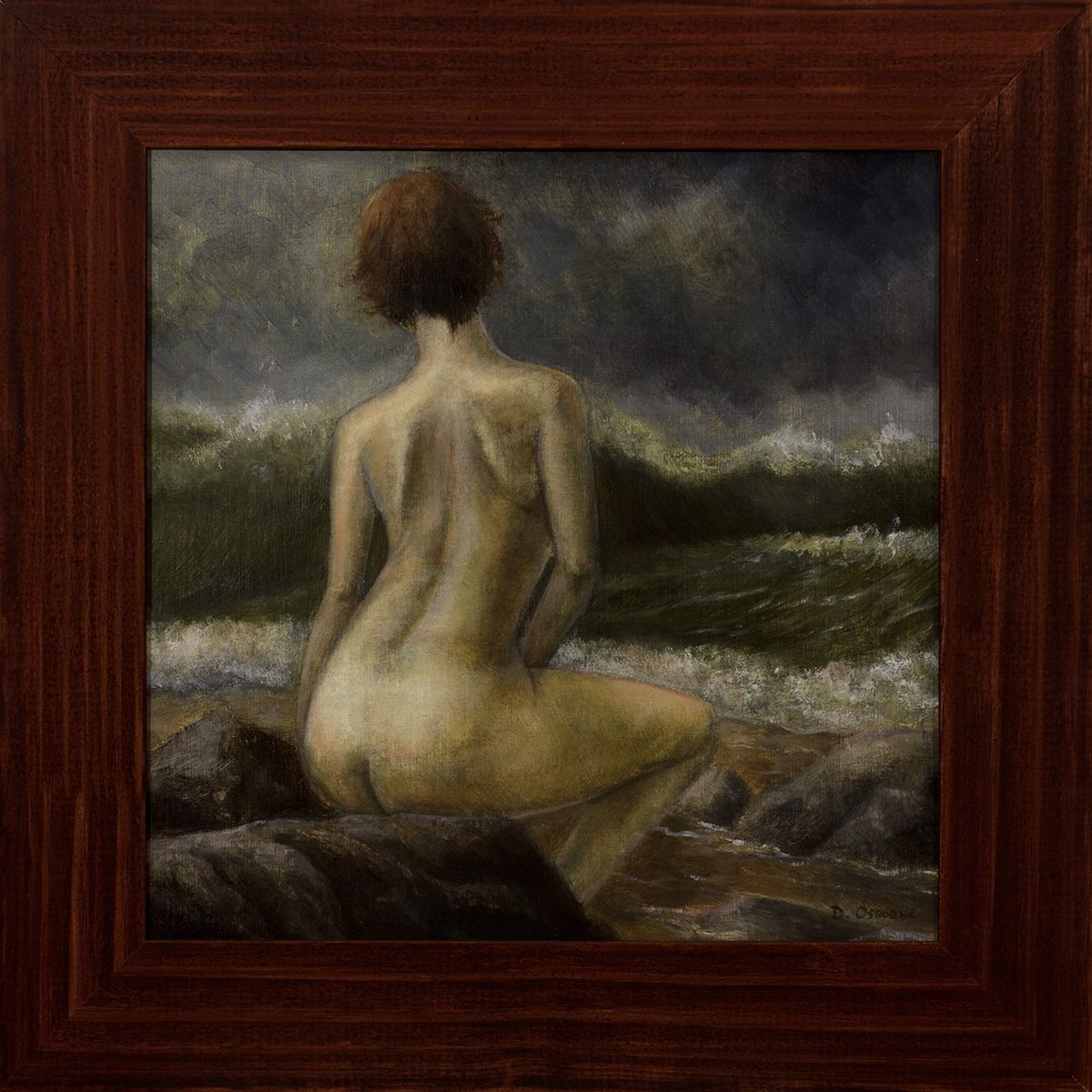

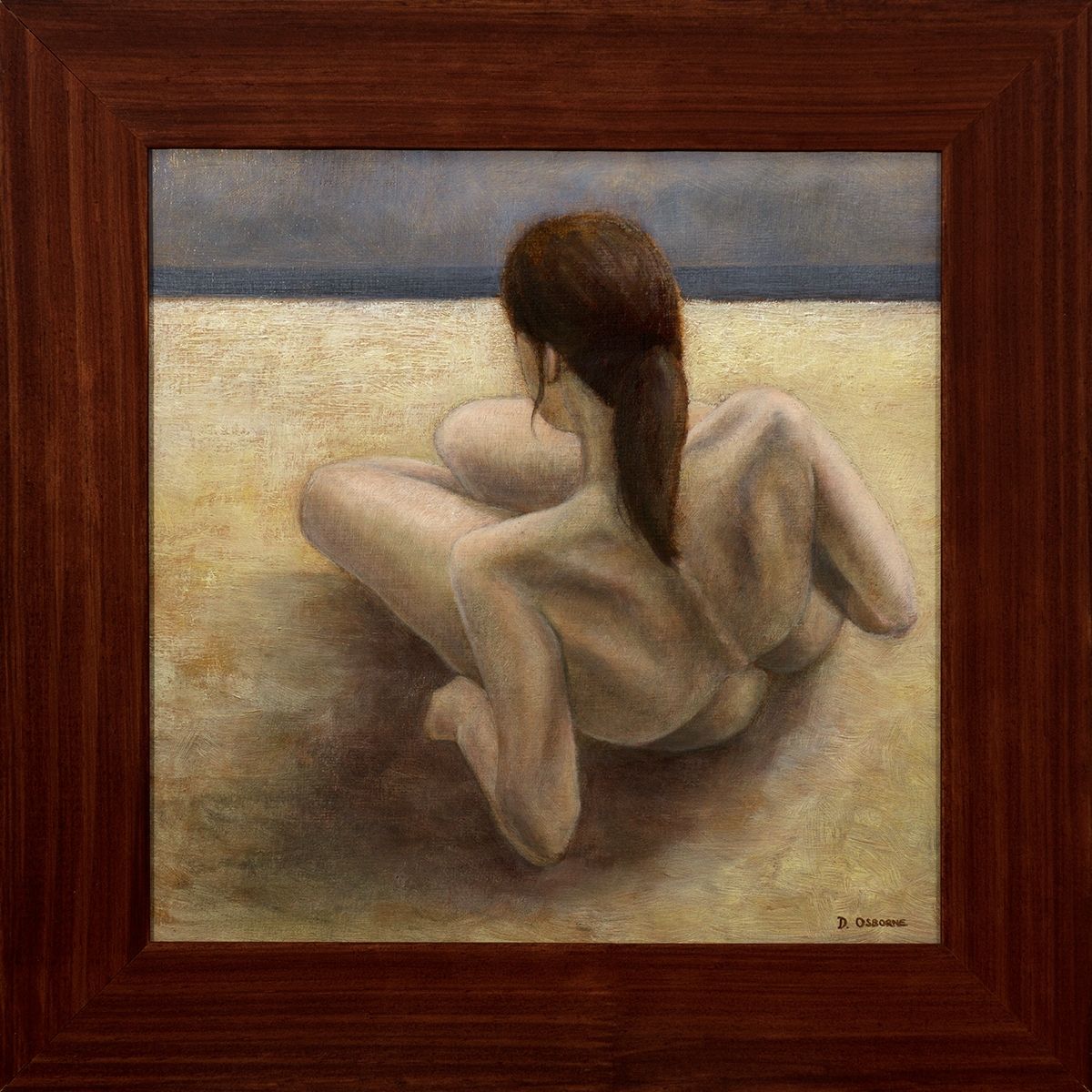

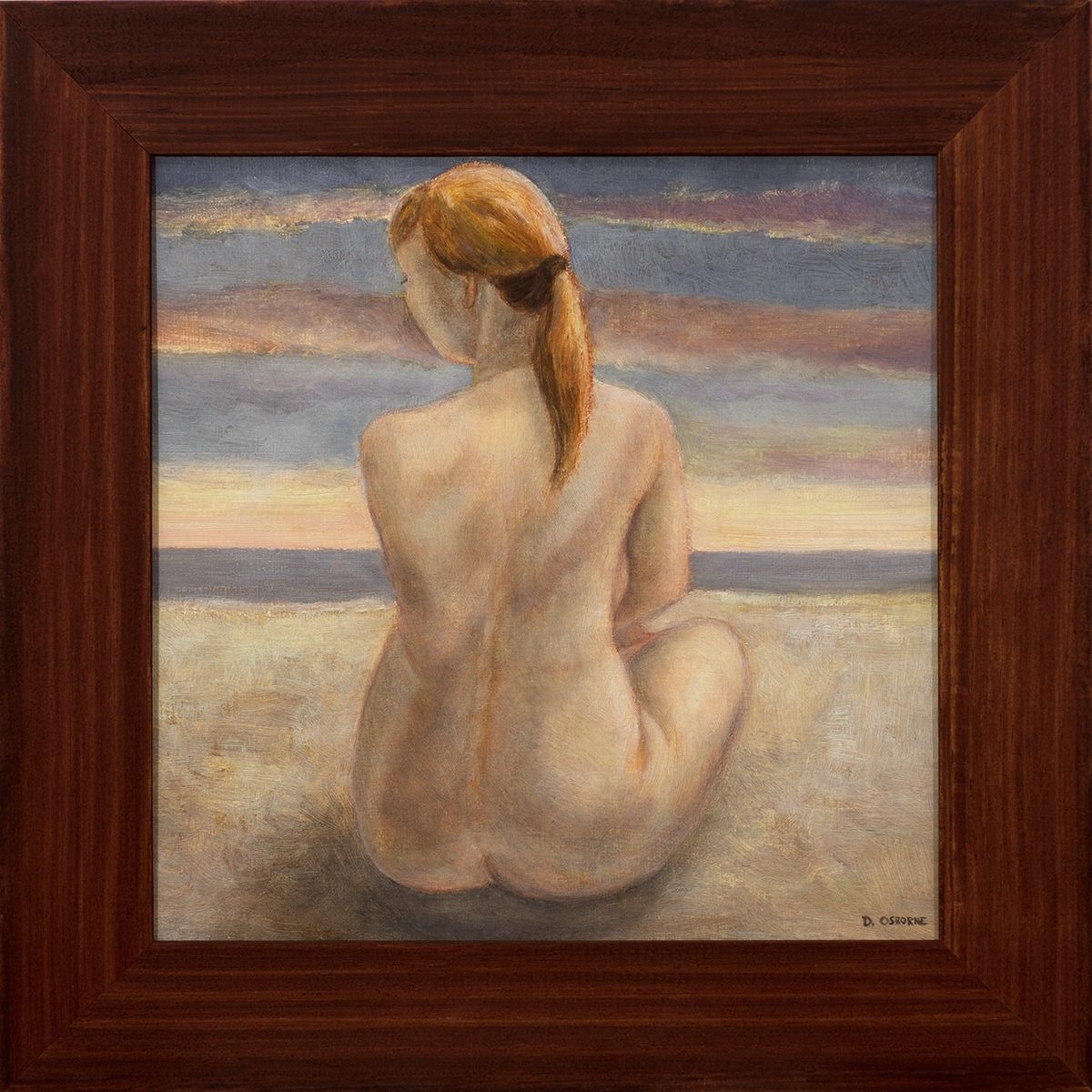

Thanks for reading, and if you have any reflections or questions about this series of paintings, or the techniques I use, please let me know in the comments below.
To view all figure painting archives, go to Figure Paintings.
- What’s the Point of Creating When No One Cares? - 24th August 2025
- Fantasia No.6 in G minor (The Cockatrice) - 3rd May 2025
- Rebirth: Starting Over as an Artist — Part 1 - 17th April 2025
